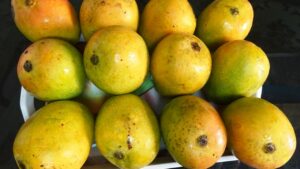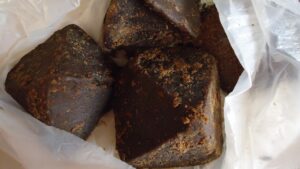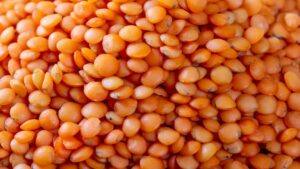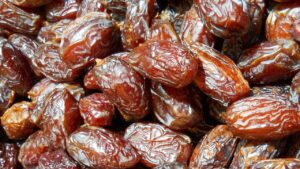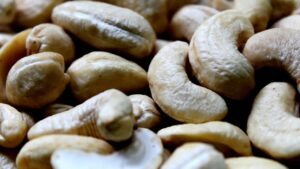Coconut comes under a different category that sits between two classifications – fruit and nut. However, it is more like a nut and less like a fruit.
In fact, the word ‘drupe’ fits coconut best as it refers to stone fruits that cover fruits like nectarines, peaches and oddly, raspberries and blackberries as well.
Coconut meat, both fresh and dry, as well as coconut milk is used to make many culinary gems across India’s geographical landscape.
Whether decadent Indian sweet dishes or rich curries in Bengal and South India, the amazing delicacies that can be prepared with this highly nutritious nut/fruit shows it is a part and parcel of our cuisines.
Coconut gives a creamy, mildly sweet spin and distinct flavour to the dishes.
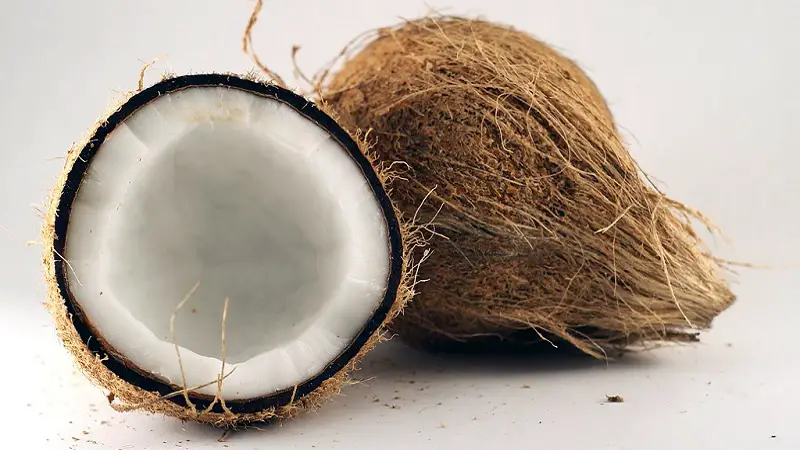
Uses of Coconut in Bengali & Indian Cooking
Coconut has a versatile use in Indian cuisines. Before we proceed to the subject, we should know it is used in five different forms – coconut water, coconut flesh or meat, coconut milk, sugar and oil.
Almost every region in India has its own unique culinary characters and cultures. Hence, coconut finds different types of uses in regional cuisines, especially in Bengal and South India.
Let us first talk about Bengal and then travel far to South India and other regions to see how they use coconut in their cuisines.
Coconut rice is mainly a South Indian delight. It is prepared in different styles. With gorgeous toppings of mint leaves and cashew nuts, this dish has everything that can do riots of flavours.
You can serve coconut-based curry or any meat dishes with coconut rice. Anything that can complement the taste of coconut rice will work well for your taste buds.
Fries
Have you ever tried narkel bhaja? Coconut flakes are sautéed or fried in oil (usually mustard). Sweet fries, as I love to call them, are beyond my words to explain their taste.
I used to steal a handful of them from mom’s kitchen. Needless to say, they need no accompaniment but they definitely work great with rice and lentils.
In Bengal, narkeler bora and narkeler paturi are mouth-watering fries. These are prepared with shredded coconut and few spices. A bowl of rice and lentil and narkeler bora or paturi – do you really need anything else?
Lentils
Coconut flakes are added to some lentils such as, chana dal (split chickpea lentils) and matar dal (yellow split peas) to sweeten the taste.
Curries
Bongs love adding shredded coconut to different types of curries. It is done to add sweetness in the most natural way. It is mostly used in aloo-kumro tarkari (potato-pumpkin curry) and oler tarkari (yum curry).
The bites also enhance the taste. Instead of shredded coconut, you can use coconut flakes in these curries for the same purpose.
Chingri macher malai curry is a signature Bengali delicacy loved by all. Coconut milk is used to sweeten and thicken the gravy.
Coconut milk is used in a variety of fish and chicken preparations as a sweetening agent. If some non-veg recipes need milk, you can use coconut milk instead of plain milk.
It will lend a different taste and some amazing, natural sweetness to your dish.
Avial is a popular curry in Kerala. Coconut milk is used in this vegetable stew. Appam is another popular Kerala cuisine.
It is a pancake prepared with coconut milk and fermented rice batter. Kerala chicken curry will never taste so good without coconut milk.
Coconut finds versatile uses in Goan cuisines as well. Many Goan curries use coconut milk as its base. Maas Kodi, Xacuti etc are two prominent names in this context.
The Goanese use desiccated coconut while using minimal spices in their curries, also known as foogath. For example, pumpkin foogath.
Chutney
Is it possible to imagine some most popular South Indian dishes with well-rounded flavour of coconut chutney?
Coconut is ground and often tempered with whole spices to prepare chutney. It works as a fine accompaniment with idly, dosa and vada. It also goes well with other exotic options.
Deserts
Coconut ladoo (popularly known as narikeler laddoo in Bengal) is one of many sweet dishes prepared in almost every Bengali household after Bijoya Dashmi (an event that marks the end of four-day Durga Puja festival).
These laddoos are a flavourful mix of desiccated coconut, jaggery and cardamom powder. It is a decent delight for your sweet cravings.
Patishapta is a traditional Bengali treat prepared on the occasion of Poush or Makar Sankranti. Shredded coconut mixed with jaggery is used as filling in pancakes prepared with rice, refined flour and semolina.
Coconut has its unforgettable footprints in many Goan sweets. Dos and Bebinc are two of the most popular sweets in this coastal region. ‘Dos’ is prepared with ground coconut whereas coconut milk goes into making Bebinca.
Baath is a must-have delicacy during the Christmas season. A generous amount of desiccated coconut goes into making of this tea-time serving.
Sanas (rice cake) is extremely popular in Goa. Coconut milk goes into making this delicious recipe.
Coconut gujiya is a must-serve during Holi celebrations. It is a yummy mix of mawa, milk, khoya, coconut, sugar syrup and pistachios carefully stuffed inside a gujiya. Already drooling, right?
Coconut kheer may not be as popular as traditional Indian kheer recipes but cooking enthusiasts should give it a try for a change of taste.
This innovative dish creates a come-together moment for rice, coconut cream, coconut milk and lots of dry fruits.
Aromatic spices such as, cardamom powder, cinnamon powder and fennel powder perk up the flavours. Usually served with delicious nutty caramel syrup, this is an absolute desert delight that you can hardly afford to miss.
Coconut barfi, prepared with desiccated coconut carefully cuddled by a mix of khoya, ghee, sugar syrup and plenty of almonds, is usually prepared during celebrations or festive occasions. It can give a tough competition to the most celebrated global deserts.
Modak is a must-make on the day of Ganesh Chaturthi. It is a wholesome, hearty and healthy delight that your sweet teeth can hardly resist.
Drinks
Coconut water with coconut flesh, sometimes with the toppings of mint leaves, features a pulpy texture. Its mildly sweet and semi-thick texture will tease your taste buds with electrifying flavour.
Coconut’s flower clusters release a juice. When fermented, it produces a local brew called coconut palm wine or toddy in local language.
Sauce
Coconut and Sauce? An unusual combination it might sound. Tangy lemon, spicy green chillies and aromatic curry leaves create a soothing flavour riots in coconut milk.
You can serve it with dosa or other dishes that work well with coconut chutney, as an exotic alternative.
Raita
Coconut raita, popularly known as coconut pachadi, is a favourite side dish in Andhra Pradesh.
The magic touch brought by tempering of curry leaves and mustard seeds enhances the flavours and gives the dish a unique, amazing taste whereas thick curds lend it tanginess.
How Do You Remove the Husk from A Coconut?
Open the coconut and place on a cutting board. Make sure the husk faces upward.
Use a mallet to tap the husk; it will help loosen the flesh.
Take a knife to peel the flesh off the husk. Peel the thin brown skin still attached to the flesh.
What Goes Well with Coconut?
Coconut pairs with many ingredients the Indians use in cooking.
You can use it with many vegetables such as, potatoes, pumpkin, yam, chana dal, matar dal.
Coconut milk is used in many non-veg preparations such as prawns, chicken etc.
Coconut-based kheer and barfi are often topped with plenty of dry fruits.
What Can You Eat with Coconut?
You can prepare salads with coconut and other fruits. You can eat it with puffed rice or roti.
In fact, roti/puffed rice, desiccated coconut and sugar make a decent combination for breakfast in many rural villages of Bengal.
What Can You Do with a Small Coconut?
You can prepare narkeler paturi or bora, ladoo, barfi with a small coconut.
You can also use its shredded flesh or meat in curries. Extract coconut milk (it is easy) and use it in chingri malai curry.
How Do You Prepare a Coconut to Eat?
Use a screwdriver to make holes in the eyes of coconut and get coconut milk. Take a small hammer to hit the coconut hard.
It will break into two pieces. Hammer it further to create more pieces.
Use a knife as a lever to separate coconut flesh or meat from the dark brown part. Take a peeler to scrape off the thin dark skin.
Use a scrubber to get desiccated coconut.
How Can You Tell If a Coconut Is Rotten?
Look for molds or brown spots on the exterior surface of coconut. If it feels damp at the bottom, the nut has gone wrong.
If you see any protrusion, it is not good either. Shake it. If you hear the sound of water, it is perfect.
Flesh or meat of coconut should look pure white. If it is rotten, it will turn yellowish.
What Can You Do with Coconut Chunks?
If they are big chunks, cut them into small flakes. Scrape off the thin brown skin.
Add them to salads, lentils or curries. You can remove the skin of the big chunks and grate them for use in curries, deserts or chutneys.
Questions & Answers:
How to Use Coconut Meat?
Coconut meat can be used to prepare lentils, curries (both veg and non-veg), salads, smoothies and sauces.
What Can Be Made from Fresh Coconut?
Fresh coconut gives an exotic touch to several deserts, such as, patishapta, modak, coconut ladoo, coconut barfi, gujiya and many more. It can be used in curries, sauces and drinks as well.
Can You Eat Coconut Raw?
Oh yes. Coconut meat and water taste sweet. So, why not?
Is Raw Coconut Good for You?
Coconut is packed with nutrition. You can consume it raw or cooked. In any form, coconut is good for you.
How Can You Tell If a Coconut is Rotten?
Molds or brown spots on the surface or yellowish flesh are a clear indication that the coconut is rotten.
How Does Coconut Taste?
The white flesh of coconut offers a firm bites along with nutty, sweet and mild flavour.
What is Coconut Called in Different Languages?
Coconut is called narkel/narkol in Bengali, narriyal in Hindi, thengai in Tamil, thenga/nalikeram in Malayalam, thengina kai in Kannada, kobbari kaaya in Telugu, nariyal/naliyer in Gujrati, naarlu in Konkani, naral in Marathi, gola/nariyal in Punjabi, nadia in Oriya and narjeel in Kashmir.


